When I first discovered the loyalty program at my favorite coffee shop, it was just another way to save a few dollars here and there. But as I started collecting points, I found myself checking my balance after every visit.
I wasn’t just buying coffee anymore—I was working toward a reward. Before I knew it, I was making that coffee shop my go-to, even when there were other options closer to me. That coffee shop has turned me into a regular customer without me even realizing it.
That’s the power of a great loyalty program! In this guide, I’ll walk you through the basics of how to create a loyalty program that brings in new customers and reinforces the relationship with existing ones.
Let’s dive in!
Benefits and Challenges When Starting A Loyalty Program
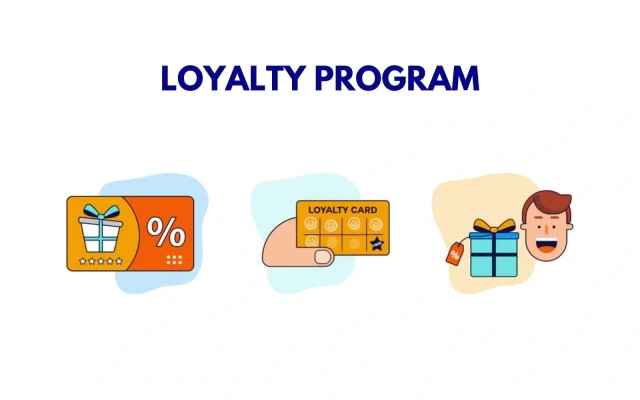
Like any strategic initiative, building a customer loyalty program has benefits and challenges. So, what’s at stake?
Benefits
- Increased customer retention: Loyalty programs encourage repeat purchases by rewarding customers for their continued engagement.
- Higher Customer Lifetime Value (CLV): Loyal customers tend to spend more over time, boosting your revenue and profitability.
- Improved customer insights: Loyalty programs provide valuable data on customer preferences, purchasing behaviors, and trends, enabling personalized marketing strategies.
- Enhanced brand perception: Offering rewards strengthens emotional connections between customers and your brand, creating advocates who promote your business through word-of-mouth.
- Competitive advantage: A well-designed loyalty program differentiates your business in the market, attracting and retaining customers over competitors.
Challenges
- Initial costs: Developing and implementing a loyalty program involves upfront investment in technology, resources, and marketing efforts.
- Customer Engagement: Getting customers to sign up for your program is one thing; keeping them engaged is another. Without regular reminders and promotions, participation can drop off.
- Risk of overpromising: Poorly structured rewards or delays in fulfillment can lead to customer dissatisfaction and harm brand reputation.
- Measuring effectiveness: Determining the program’s success and financial impact requires continuous tracking and evaluation, which can be challenging for small businesses.
How To Implement A Loyalty Program: A Detailed Guide
Now, let’s get this show on the road and start with a clear vision and a realistic budget.
Step 1: Define Your Goals and Budget

First, ask yourself: What do I want to achieve with this loyalty program? Your goals should be specific and measurable. For example:
- Increase repeat purchases by 20% within six months.
- Boost customer lifetime value by $50 per customer over the next year.
- Drive 15% of sales through referrals by incentivizing loyal customers.
Next, think about how much you’re willing to invest in creating and running your loyalty program. Consider the following costs:
- Technology: Subscription fees for loyalty software or tools.
- Rewards: The value of discounts, freebies, or perks offered to customers.
- Marketing: Promotional costs for launching and maintaining visibility of your program.
- Staffing: If you need additional team members or time to manage the program, include that in your calculations.
For small businesses, building a customer loyalty program can cost as little as $100 to $200 per month to start. For larger businesses with more complex needs, this might scale into the thousands.
Step 2: Choose Your Loyalty Program Reward Structures

Now for the fun part – designing your loyalty program! You need to select a structure that fits your brand and your customers’ style. Here are a few popular options:
- Points-based systems: Customers earn points for every purchase, which can be redeemed for rewards.
- Tiered rewards: Rewards improve as customers spend more or move up tiers.
- Cashback programs: Customers receive a percentage of their spending back as rewards.
- Subscription loyalty programs: Customers pay a fee to access exclusive benefits and perks.
- Referral programs: Existing customers are rewarded by bringing in new customers through word-of-mouth or sharing unique referral links, incentivizing both the referrer and the referee.
Expert’s recommendation: For beginners, I recommend starting with a simple points-based system. It’s easy to implement and understand, and it allows you to test the waters and gather data on customer behavior. As your business grows and you gain more insights, you can always add tiers or VIP elements to enhance your program.
Step 3: Select the Right Tools
A successful loyalty program cannot run without reliable and suitable assistance. Here are five tools with their strengths to consider for e-commerce merchants:
- Joy Rewards & Loyalty: This app is incredibly user-friendly, packed with features, and offers seamless integration with your online store and POS system. Plus, it’s very affordable, with a free plan to get you started.
- Smile.io: Another great option for building points-based loyalty programs. It’s popular for its robust features and ease of integration.
- Yotpo: This platform offers a suite of marketing tools and a robust loyalty program builder. It’s a good choice if you’re looking for a more comprehensive solution.
- LoyaltyLion: This powerful platform offers advanced customization and segmentation. However, it’s also one of the more expensive platforms on the market.
- Rise.ai: This software focuses on store credit and gift card-based loyalty programs. It’s a great option for businesses looking to create cashback-style rewards.
What Beginners Should Look For in a Platform
If you’re new to loyalty programs, simplicity is key. Here’s what I recommend looking for:
- Ease of Use: Choose a platform with an intuitive interface and straightforward setup.
- Scalability: Pick a tool that grows with your business. As you gain more customers, your program should be able to handle increased participation.
- Affordability: Start with a platform that offers free or budget-friendly plans so you can test the waters without committing to a large expense.
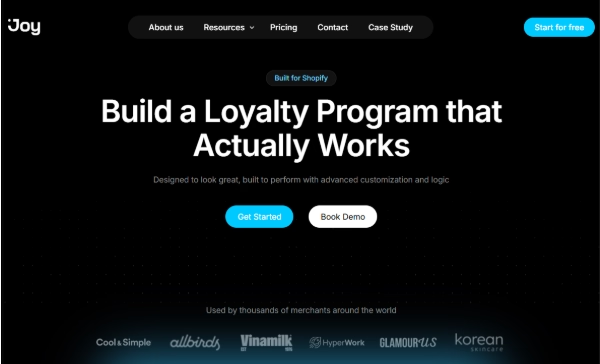
Joy Loyalty Program has everything you might need to build a customer loyalty program: ease of use, scalability, and affordability. It’s simple to set up, and its features are robust enough to grow with your business. Plus, its customization options and 24/7 customer support ensure your program feels unique and professional.
Step 4: Design Your Loyalty Program
Designing your loyalty program is the soul of the whole process. This is your chance to create something that not only excites your customers but also sets your business apart. Let me guide you through how to structure it effectively:
Research Competitors’ Offerings
- The “If It Ain’t Broke…” Approach: If a competitor’s program is successful, don’t be afraid to borrow some of their best practices. It’s a proven strategy for a reason, and chances are yours will be equally successful.
- The “Remix” Approach: Get inspired by your competitors, but add your own unique twist. If they reward points for purchases, you could add something unique, like extra points for leaving reviews or referring friends. This allows you to stand out while still leveraging proven strategies.
- Create A Totally New Program: If you know your target audience well, consider creating a program entirely tailored to their preferences. This approach can make you truly stand out.
What Actions Should You Reward?
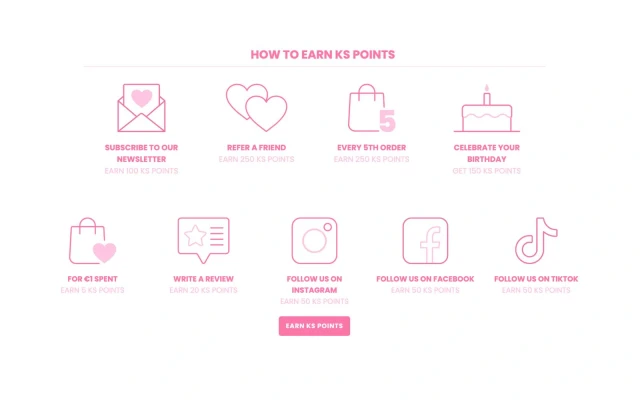
Rewarding the right customer actions ensures meaningful engagement with your program. Consider the following:
- Purchases: Reward customers for every dollar they spend.
- Referrals: Encourage customers to bring in friends by offering rewards for successful referrals.
- Reviews: Give points for leaving product reviews to boost your social proof.
- Social Media Engagement: Reward customers for following your social channels or sharing posts.
- Account Sign-Up: Offer a welcome bonus when customers join your loyalty program to get them started.
- Birthdays: Make your customers feel special with a birthday reward.
Each action should align with your business goals. If growing your customer base is a priority, referrals might be your main focus. If building engagement is key, emphasize actions like reviews and social sharing.
What Rewards Should You Offer?
Rewards are the heart of your loyalty program. They should be compelling enough to motivate customers while being sustainable for your business.
- Financial rewards: Discounts, cashback, free shipping, or free products that provide tangible value.
- Non-financial rewards: Exclusive and early access to sales or new products, birthday gifts, personalized experiences (e.g., consultations, workshops), or charitable donations in their name.
Key Insight: According to Deloitte’s U.S. Consumer Loyalty Survey, financial rewards are the most important attribute of a loyalty program. So, while it’s great to offer a variety of rewards, make sure to include some that provide direct financial value to your customers.
Step 5: Launch & Promote Your Loyalty Program
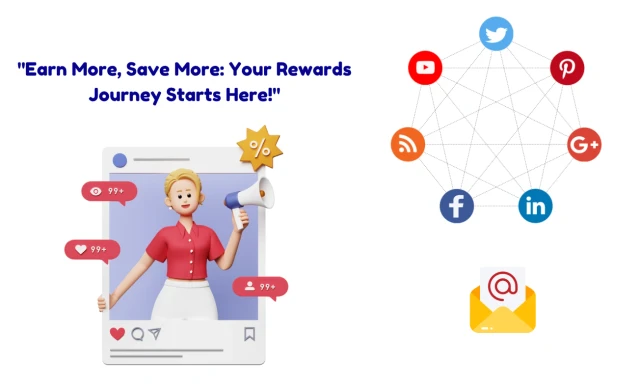
You’ve designed your loyalty program—now it’s time to bring it to life! A well-planned launch and effective promotion are crucial to its success.
- Develop a roadmap: Create a timeline that outlines each phase of your program’s launch, from internal testing to full-scale implementation.
- Basic tactics for promotion:
- Send personalized emails to your existing customers announcing the program.
- Highlight the program on your website with banners or pop-ups.
- Use social media campaigns to create excitement and awareness.
- Advanced tactics:
- Launch a mobile app for seamless user engagement.
- Introduce gamification, like badges or leaderboards, to increase participation.
- Personalize communications and rewards using customer data.
- Collaborate with other brands for joint reward programs.
- In-store promotion: For businesses with physical stores, ensure your staff is trained to promote the program. Place signage at checkout counters and on product displays. You could even offer in-store-only perks, such as bonus points for signing up during a visit.
Step 6: Audit and Improve
Last but not least, a loyalty program requires continuous optimization to remain effective. Regularly review its performance and make necessary adjustments.
Measure Your Loyalty Program Success
You can use your loyalty program app’s analytics dashboard or your online store’s platform analytics to track these metrics:
- Participation Rate: How many customers are joining your program?
- Customer retention rate: How many customers return to your store?
- Redemption Rate: How many rewards are being redeemed?
- Customer Lifetime Value (CLTV): How much are your loyal customers spending over time?
- Repeat Purchase Rate: How often are your customers coming back for more?
- Customer Churn Rate: How many customers are you losing?
Generally, a higher participation rate, redemption rate, and CLTV indicate a healthy program. A low churn rate is also a good sign!
If The Program Is Successful
- Expand the program by introducing new reward options.
- Additionally, target untapped customer segments by analyzing behavioral data to identify potential loyalists.
- Explore opportunities to build partnerships with other brands.
- Experiment with different reward structures, communication strategies, or gamification elements to see what resonates best with your customers.
If Your Loyalty Program Isn’t Meeting Expectations
- Dive deeper into customer insights by reassessing your segments.
- Simplify program rules to make participation more intuitive.
- Adjust reward structures by increasing the perceived value of rewards or diversifying reward options to better accommodate varied customer preferences.
- Engage in A/B testing to pinpoint which changes drive better engagement.
- Consider implementing customer feedback to refine the program further and reignite interest.
What Makes A Loyalty Program Successful
Success doesn’t come by chance—it’s crafted with strategy, creativity, and the right tools. Here are the key factors that contribute to a successful loyalty program:
- Clear objectives: Before you start, what do you want to achieve with your program? Clear goals keep your program focused and measurable.
- Target audience understanding: Your program should reflect what your customers value most. Use CRM data to understand their purchasing habits, preferences, and engagement patterns.
- Realistic budget: A loyalty program has costs, so it’s important to set a realistic budget. Factor in the cost of rewards, technology, and promotional efforts.
- Compelling value proposition: Whether it’s exclusive discounts, personalized offers, or premium experiences, the value proposition should reflect your brand and address customer desires.
- Effective communication: Even the best loyalty program won’t succeed if customers don’t know about it. Communicate the program’s benefits and how customers can participate using multiple channels, such as email, social media, in-store promotions, and your website.
- The right technology: A loyalty program is only as good as the tools behind it. The right technology helps you track points, manage rewards, and seamlessly engage customers. Joy Loyalty is one of the best tools for automating and streamlining your program.
- Simplicity and accessibility: Complicated structures or cumbersome processes can discourage participation. Ensure customers can enroll, earn, and redeem rewards effortlessly, whether online or in-store.
3 Examples of Loyalty Program Success
To make it practical, let’s take a look at three standout brands that have built successful loyalty programs across different industries:
1. Ulta Beauty Rewards Program
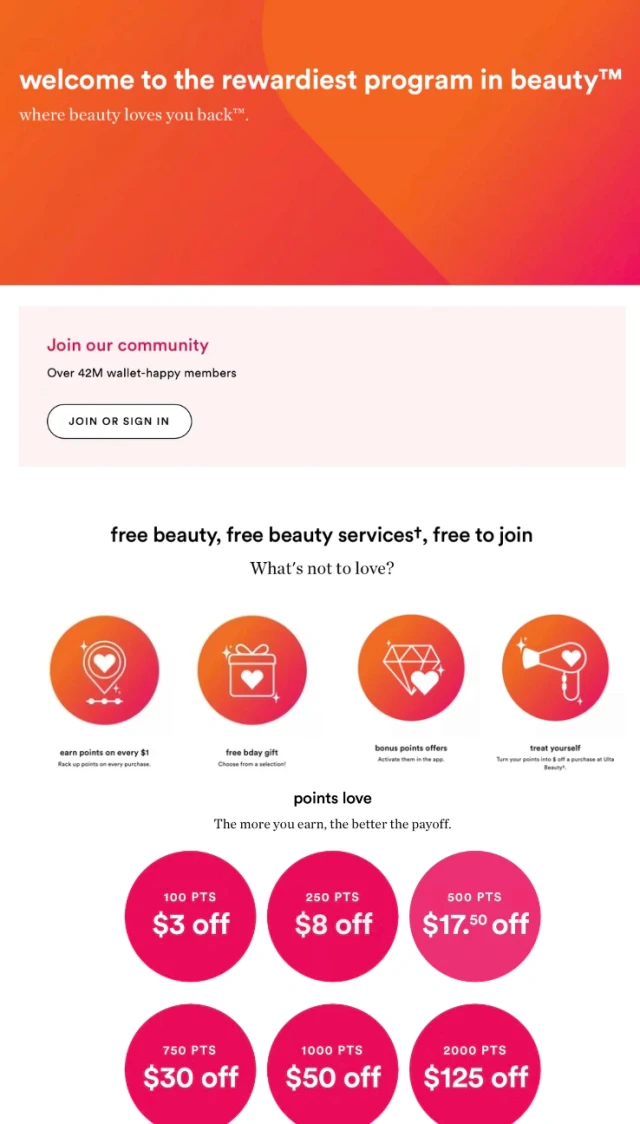
Type: Tiered points-based loyalty program
The Ulta Beauty Rewards Program is a benchmark in the beauty retail industry, boasting over 42.2 million active members who drive 95% of the company’s total sales.
Its tiered structure ensures inclusivity while incentivizing higher spending with escalating benefits, making loyalty highly rewarding for high-value members.
The program excels with its flexibility and personalization. Members can redeem points across a variety of categories, such as beauty products, salon services, and exclusive experiences. Features like birthday gifts, bonus-point events, and an Ulta Beauty Rewards credit card with additional perks enhance the program’s appeal.
Ulta’s commitment to omnichannel engagement also drives success. Customers can earn and redeem rewards online, in-store, or through the app, ensuring a seamless experience. Strategic use of challenges and bonus offers further boosts engagement, encouraging customers to try new products and brands.
With a 34% increase in conversion rates, Ulta demonstrates how a well-structured loyalty program can fuel business growth and customer satisfaction.
2. Swarovski Crystal Society (SCS)
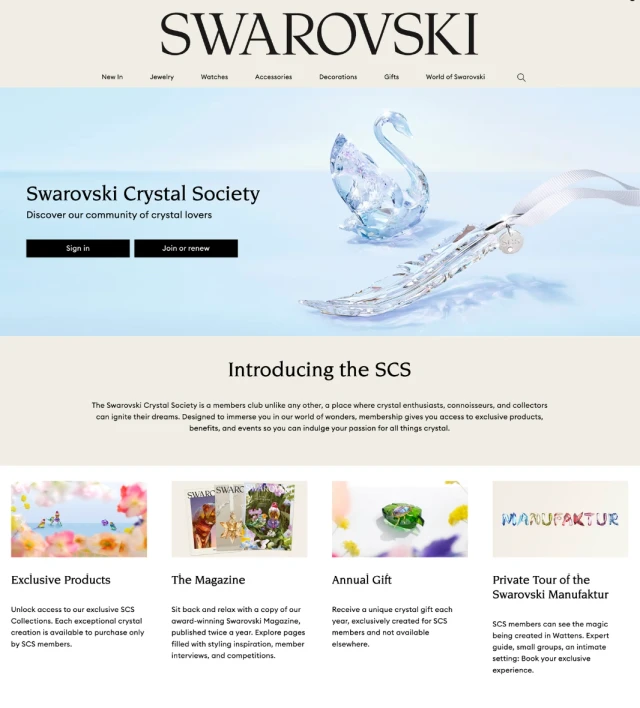
Type: Subscription-based loyalty program
Swarovski’s Crystal Society (SCS) takes a different approach by offering a premium, paid membership program for collectors and brand enthusiasts. Members pay an annual or three-year subscription fee to unlock exclusive benefits, fostering a sense of pride and belonging within an elite community.
The program’s success lies in its focus on exclusivity and collectability. Members gain access to limited-edition products, annual crystal gifts, and biannual publications showcasing Swarovski’s latest designs. The program also emphasizes customer care through complimentary repairs, free shipping, and access to members-only information.
Beyond product rewards, SCS delivers experience-driven loyalty by inviting members to special events, offering free annual admission to Swarovski’s cultural site Kristallwelten, and unlimited access to the VIP lounge. These unique experiences enrich the membership and deepen emotional connections.
3. Rakuten cashback loyalty program
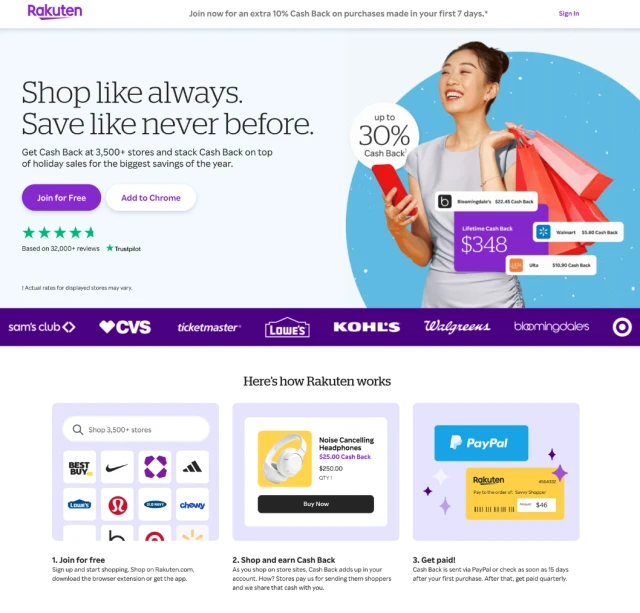
Type: Cashback loyalty program
Rakuten, a global leader in e-commerce and online services, operates one of the most successful cashback programs in the world. The program allows members to earn cashback on purchases made through Rakuten’s extensive network of over 3,500 partner retailers.
Rakuten’s cashback program is simple, accessible, and value-driven. By integrating tools like a user-friendly mobile app and a browser extension, Rakuten ensures that activating cashback and accessing exclusive deals is effortless.
Ultimately, it has built a community of over 21 million members with over $3.6 million in cashback.
Start Your Customer Loyalty Program Today
There you have it! Follow this guide step by step, and you’ll have a program that’s easy to manage and effective. Remember, the most important thing is to keep it simple, valuable, and tailored to your audience.
Now’s the time to take action. And if you’re looking for a user-friendly and affordable way to get started, check out Joy – Rewards & Loyalty Program for Shopify Business . It’s a fantastic loyalty software that can help you build a powerful loyalty program in minutes!
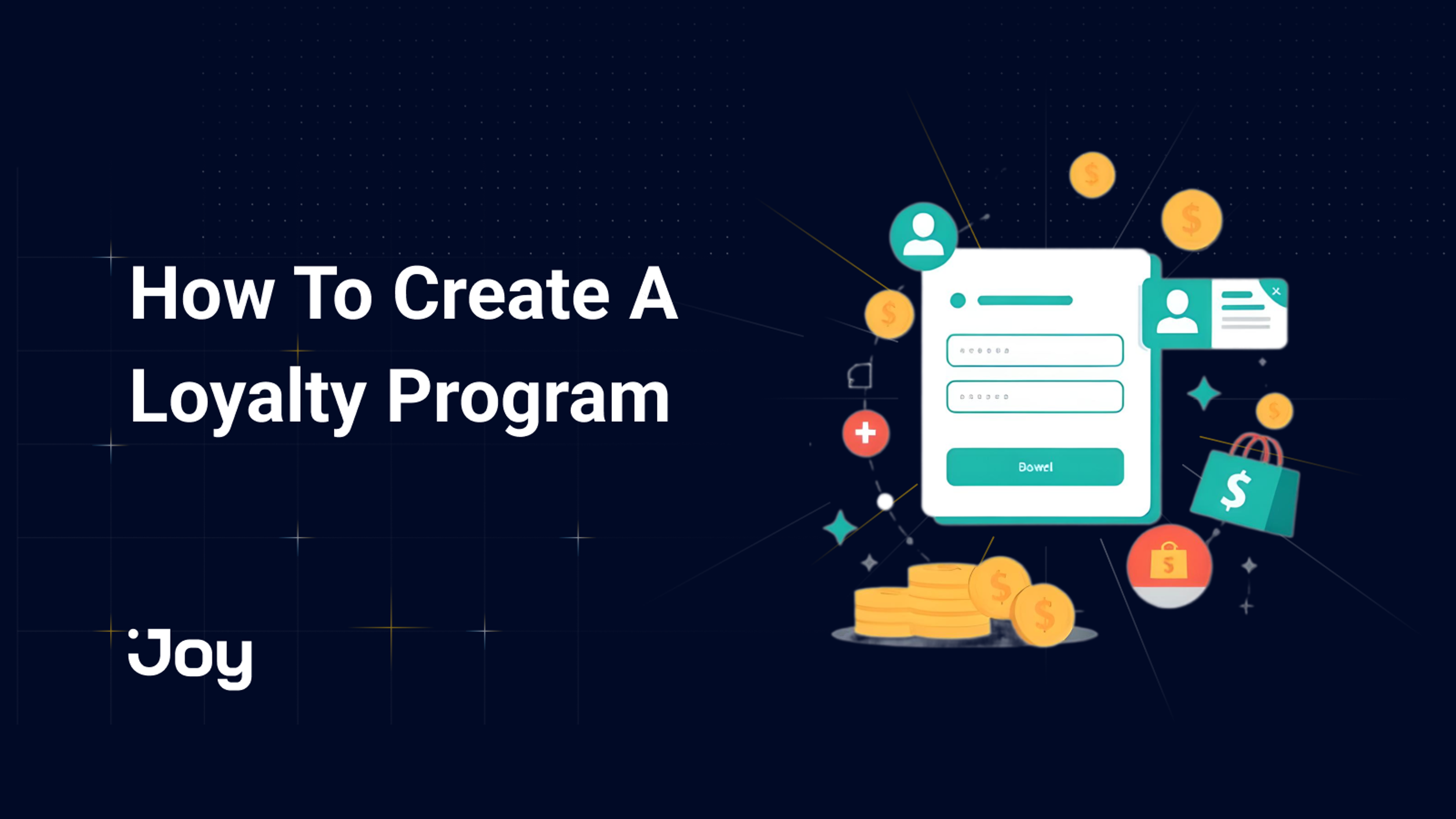



-a7e9a3.png?width=828&q=75&f=webp&auto=format)